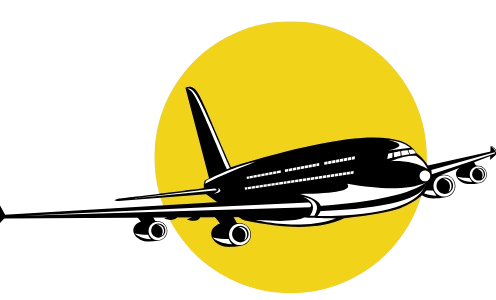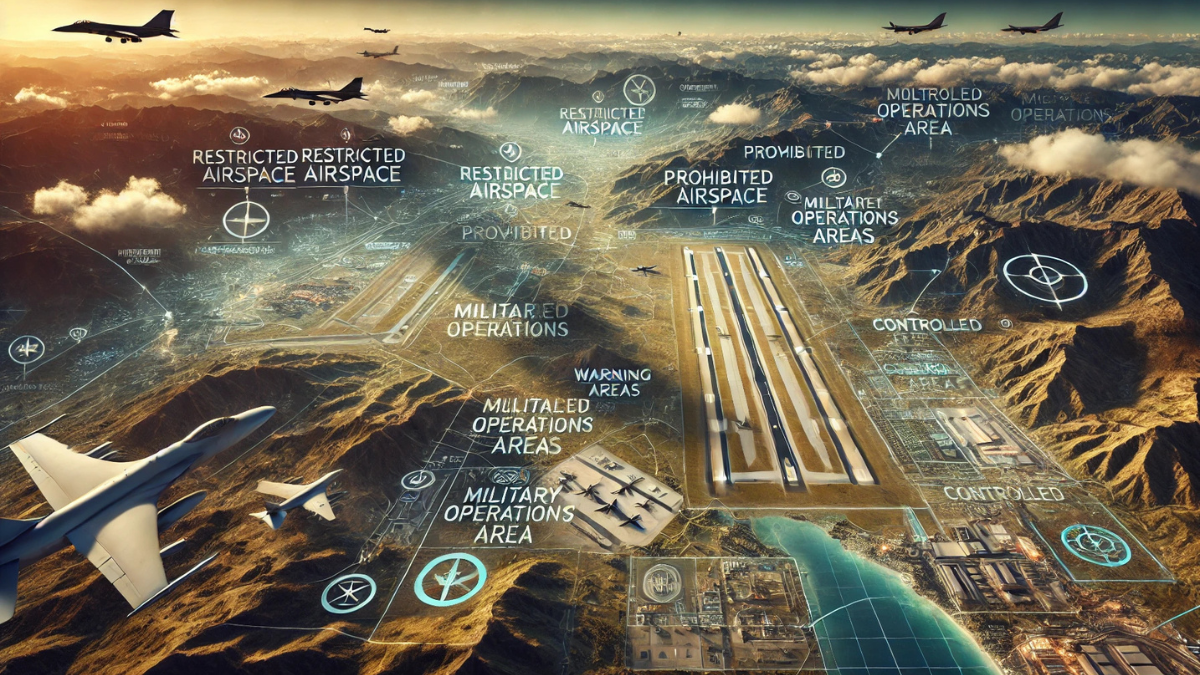When you look up at the sky, it’s easy to think of it as a vast expanse where airplanes glide freely from one destination to another. However, lurking behind this serene image is an intricate web of regulations and designated zones that ensure safety for all who navigate our skies.
Welcome to the fascinating world of Special Use Airspace (SUA)! Whether you’re a seasoned pilot, aviation enthusiast, or simply curious about what happens above your head, understanding SUAs is key to appreciating how air traffic is managed. In this post, we’ll dive into the various types of special use airspace—each with its own unique purpose—and uncover their critical role in keeping both military operations and civilian flights safe.
So buckle up as we take flight through the layers of airspace management!
Introduction to Special Use Airspace
Airspace is a complex and intricate system, essential for the smooth operation of aviation. Among its various classifications, special use airspace holds a unique position that plays a critical role in ensuring safety and operational efficiency. But what exactly does this term mean? And how do these designated areas impact pilots, air traffic controllers, and even the general public?
As we dive deeper into understanding special use airspace, we’ll explore its different types—each serving a specific purpose—and highlight their significance in maintaining safe skies. Whether you’re an aviation enthusiast or just curious about what goes on above our heads, this journey through the clouds promises to be enlightening. Buckle up as we navigate through restricted zones and military operations while uncovering the vital framework that protects us all!
Types of Special Use Airspace:
Special use airspace (SUA) is crucial for managing specific aviation activities that require restrictions or limitations. Each type serves distinct purposes, ensuring safety and operational efficiency.
Restricted areas are zones where flight is limited due to hazardous activities like military training or weapon testing. Pilots must obtain permission before entering these regions.
Prohibited areas completely forbid aircraft from flying through them, often for national security reasons. These spaces protect sensitive sites from unauthorized aerial access.
Military Operations Areas (MOAs) allow military pilots to train without interference from civilian traffic, although other flights can still navigate through these zones with caution.
Temporary Flight Restrictions (TFRs) are implemented during special events or emergencies to safeguard public safety by restricting airspace temporarily.
National Security Areas (NSAs) designate critical locations needing heightened protection but do not impose mandatory restrictions on pilots who choose to avoid them.
Alert areas serve as a warning system, highlighting high-traffic regions where pilots should be particularly vigilant about their surroundings.
Restricted Areas
Restricted Areas are designated airspaces where flight operations are limited. They play a crucial role in national security and safety.
These areas often surround military installations, testing ranges, or sites of sensitive activities. Access is typically restricted to authorized personnel only.
Pilots must be aware of these zones to avoid inadvertent incursions. Violation can lead to serious consequences, including legal action or interception by military aircraft.
To operate within a Restricted Area, pilots usually need special clearance from the controlling agency. This ensures that air traffic remains safe and coordinated during critical operations.
Staying informed about the location and status of Restricted Areas is vital for all aviators. Utilizing aeronautical charts helps in navigating around these spaces effectively.
Prohibited Areas
Prohibited Areas are a critical component of special use airspace. These zones restrict all aircraft from entering, ensuring maximum safety and security.
Typically established for national defense or high-security events, these areas serve to protect sensitive locations such as military bases, government facilities, or key infrastructure. Unauthorized entry into a prohibited area can lead to serious legal repercussions.
Pilots must be thoroughly familiar with the specific coordinates and dimensions of these zones before flight. Notably, the boundaries are clearly marked on aeronautical charts to aid navigation and awareness.
Understanding Prohibited Areas is essential for maintaining operational integrity in aviation. They play a vital role in safeguarding national interests while promoting safe flying practices across civilian airspace.
Military Operations Areas (MOAs)
Military Operations Areas (MOAs) are designated airspace regions where military training and operations take place. These areas allow armed forces to conduct activities like aerial maneuvers, live-fire exercises, and other tactical drills.
Pilots flying in or near MOAs must be aware of the potential for unexpected aircraft movements. The presence of military jets can lead to rapid changes in flight patterns, requiring vigilance from civilian pilots.
While MOAs are essential for maintaining military readiness, they also emphasize safety protocols. Coordination between military and civilian air traffic control ensures that both sectors communicate effectively.
Airspace users often have access to information regarding MOA schedules through flight planning tools. This helps pilots avoid conflicts while promoting safe navigation around these operational zones.
Temporary Flight Restrictions (TFRs)
Temporary Flight Restrictions (TFRs) are crucial elements in the aviation landscape. They provide a way for authorities to manage airspace during specific events or emergencies.
TFRs can be implemented for various reasons, including natural disasters, public safety incidents, or VIP movements. When issued, these restrictions inform pilots about areas where flight operations are limited or prohibited.
Pilots must stay updated on TFRs through resources like NOTAMs (Notices to Airmen). Ignoring a TFR can lead to serious consequences and jeopardize safety.
These restrictions often pop up around high-profile gatherings, such as political conventions or sporting events. They ensure that aircraft do not interfere with security measures in place during such times.
Understanding TFRs is essential not only for compliance but also for maintaining safe skies. Staying informed enables pilots to navigate safely while respecting the established boundaries laid out by aviation authorities.
National Security Areas (NSAs)
National Security Areas (NSAs) are zones established by the Federal Aviation Administration (FAA) to protect sensitive sites from potential threats. These areas often encompass military bases, government buildings, and critical infrastructure.
Within an NSA, pilots may be advised to exercise heightened caution. While NSAs do not prohibit aircraft operations outright, they encourage pilots to avoid these regions whenever possible.
Notably, specific procedures exist for those operating within or near these airspaces. Communication with Air Traffic Control is essential for ensuring safety and compliance with any existing restrictions.
The designation of an NSA reflects a balance between national security needs and aviation safety protocols. Understanding these areas helps aviators navigate effectively while respecting the precautions in place surrounding vital assets.
Alert Areas
Alert Areas are designated airspace regions where pilots should be particularly vigilant. These areas typically contain high levels of pilot training or unusual aerial activities that might pose risks to other aircraft.
While Alert Areas do not impose specific restrictions, they serve as a warning. Pilots flying in these zones need to remain aware and prepared for potential encounters with military operations or civilian flight maneuvers.
Communication is key when operating near an Alert Area. Pilots are encouraged to monitor relevant frequencies and announce their positions as they approach the boundaries. This proactive approach enhances safety by reducing the chances of miscommunication among air traffic participants.
Understanding where these alert zones exist can help mitigate risks during flight operations. A little awareness goes a long way in ensuring safe skies for everyone involved.
Importance of Special Use Airspace in Aviation Safety
Special use airspace plays a crucial role in ensuring aviation safety. It provides designated areas where specific activities can take place without interference from general air traffic.
This controlled environment is vital for military operations, training exercises, and special events. These zones help mitigate risks by keeping civilian aircraft away from potential hazards associated with military maneuvers or other sensitive operations.
Additionally, special use airspace assists in managing emergencies and unexpected situations that may arise during flight. The predefined boundaries offer a structured approach to handling unforeseen incidents, reducing the likelihood of accidents.
By clearly marking these spaces on aeronautical charts, pilots can navigate safely around restricted zones. This awareness fosters better communication and cooperation among different aviation sectors.
Regulations and Procedures for Operating in Special Use Airspace
Navigating special use airspace requires a solid understanding of regulations and procedures. Pilots must familiarize themselves with the specific boundaries and restrictions that apply to these areas.
Before entering restricted or prohibited zones, obtaining permission is essential. This often involves coordination with air traffic control (ATC) or military authorities. Failure to adhere can lead to serious consequences.
For military operations areas (MOAs), pilots should remain vigilant about active times and potential hazards. Utilizing flight planning tools helps ensure compliance while enhancing situational awareness.
Temporary Flight Restrictions (TFRs) are dynamic in nature, often established for events like VIP movements or emergency situations. Staying updated on TFRs via NOTAMs is crucial for safe navigation.
It’s equally important for commercial operators to communicate effectively within these airspaces, ensuring safety not just for themselves but also for others in proximity.
Examples of Special Use Airspace Usage:
Special use airspace plays a crucial role in various aviation activities. For instance, military training exercises often utilize restricted areas to ensure safe operations while honing skills. Pilots practice maneuvers without the interference of civilian air traffic.
During high-profile events, Temporary Flight Restrictions (TFRs) may be enacted to protect VIP movements. This ensures that dignitaries can travel securely without potential aerial threats or disruptions.
Space launches present another fascinating example. Rocket tests and satellite deployments typically require designated airspace closures to prevent accidents during launch sequences. The area remains off-limits for commercial flights until it’s deemed safe.
These examples illustrate how special use airspace is essential not just for safety but also for facilitating critical national functions in aviation and defense sectors. Each scenario highlights the need for coordination between various stakeholders to maintain order in shared skies.
Military Training Exercises
Military training exercises are a crucial aspect of maintaining operational readiness. These maneuvers often take place in designated special use airspace, minimizing the risk to civilian aircraft while allowing military personnel to engage in realistic scenarios.
During these exercises, pilots practice various tactics and formations. Simulated combat situations require precise coordination among aircrews and ground forces. This environment fosters teamwork and enhances skills that could be vital during real-world operations.
The presence of restricted areas ensures clear communication between military units and civilian air traffic control. It’s essential for safeguarding both participants and non-combatants nearby.
Training also includes joint missions with allied nations, which helps strengthen international relations through shared experiences and expertise. As technology advances, these exercises are becoming more sophisticated, incorporating drones and advanced simulation tools to better prepare troops for future challenges.
VIP Movement Restrictions
VIP movement restrictions are critical components of special use airspace. They ensure the safety and security of high-profile individuals, such as government officials or diplomats.
When a VIP is traveling, air traffic may be rerouted or restricted in certain areas. This prevents potential threats and maintains clear skies for their aircraft. The coordination required during these movements involves multiple agencies.
During significant events like state visits or international summits, temporary flight restrictions (TFRs) often come into play. These measures create safe zones around the VIP’s flight path to ward off any risks from unauthorized aircraft.
The impact on general aviation can be substantial, with pilots needing to stay informed about changing conditions. Awareness is crucial for ensuring compliance and safety when navigating near designated VIP routes.
Space Launches and Rocket Tests
Space launches and rocket tests fall under a category of activities that necessitate specialized airspace management. These events require clear skies and controlled environments to ensure safety for both the crew involved and surrounding air traffic.
When a launch occurs, Temporary Flight Restrictions (TFRs) are often implemented. These restrictions prevent civilian aircraft from entering specific areas during critical phases of the launch process. The goal is to minimize risk while maximizing operational efficiency.
Rocket testing also demands similar precautions. Often held at designated test sites, these operations may affect nearby airspace for extended durations. Coordination with aviation authorities ensures that all flight routes remain unobstructed.
The excitement around space exploration brings forward innovations in aerospace technology but requires careful planning within special use airspace frameworks. This proactive approach allows for advancements while keeping safety as the top priority during high-stakes endeavors in our quest beyond Earth’s atmosphere.
Challenges and Controversies Surrounding Special Use Airspace
Navigating special use airspace presents several challenges. One major issue is the limited availability of airspace for civilian flights. This can lead to delays and increased operational costs, especially during peak times.
Controversies often arise regarding military operations in these areas. Communities near military bases sometimes express concerns about noise pollution and safety risks associated with training exercises overhead.
Another challenge involves coordination among various agencies. Communication gaps between federal aviation authorities and local jurisdictions can result in confusion over airspace boundaries.
Furthermore, technological advancements may not always keep pace with the evolving needs of aviation safety. As new aircraft enter service, there are ongoing discussions about how best to integrate them into existing frameworks without compromising security or efficiency.
Public understanding of special use airspace also remains a hurdle. Many people are unaware of its purpose and significance, which can fuel misconceptions and resistance to necessary regulations.
Future of Special Use Airspace: Advancements in Technology
The future of special use airspace is being shaped by rapid advancements in technology. Innovations like artificial intelligence and machine learning are providing new ways to manage and monitor these airspaces more efficiently.
Real-time data sharing between aircraft, control towers, and military operations enhances situational awareness. This leads to improved safety for all aviation users, especially in congested areas.
Drones are also evolving the landscape of special use airspace management. Their increasing integration into various operations raises questions about regulation and oversight but offers exciting possibilities for surveillance and reconnaissance missions.
Moreover, satellite technology is streamlining the way we track movements within restricted zones. Enhanced GPS systems allow pilots to navigate complex environments with increased precision.
As technology continues to advance, so too will our approaches to managing special use airspace—ultimately fostering a safer aviation ecosystem while accommodating diverse operational needs.
Conclusion:
Balancing safety and efficiency in special use airspace is a complex but crucial aspect of aviation. As air travel continues to grow, the importance of understanding these unique airspaces cannot be overstated.
Special use airspace serves specific purposes that can significantly impact both military and civilian operations. From restricted areas ensuring safety during training exercises to temporary flight restrictions protecting events or individuals, each type plays an essential role.
Technology advances are transforming how we navigate these zones. With improved communication systems and tracking capabilities, pilots can more easily adhere to regulations while maintaining operational efficiency.
As discussions around special use airspace evolve, so too will the practices surrounding it. Ongoing dialogue among stakeholders—aviators, regulators, and policymakers—is necessary for striking the right balance between security measures and the need for open skies.
Ultimately, fostering awareness about special use airspace enhances not only aviation safety but also helps ensure efficient flight operations across our busy national landscape.




